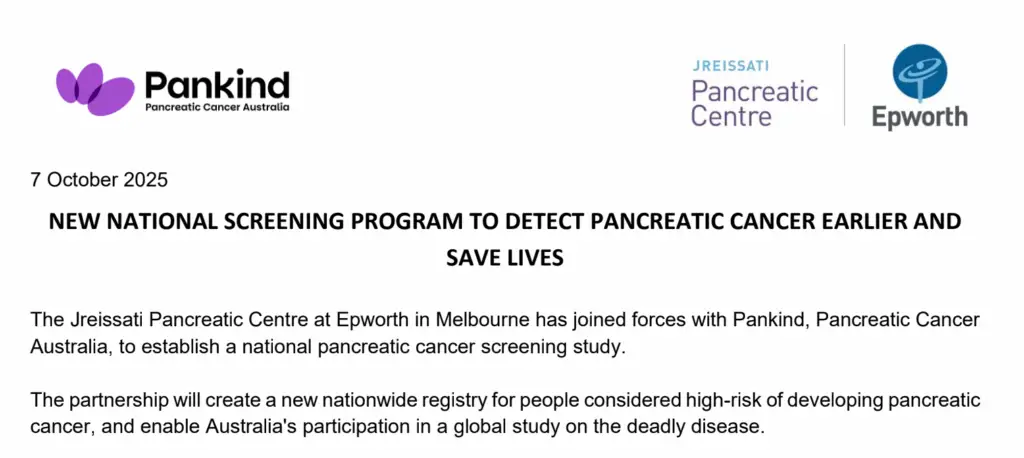Pancreatic cancer is known for being one of the most challenging and painful types of cancer to endure. Pain is a common symptom experienced by many pancreatic cancer patients due to the tumor’s location, treatments, and its progression. Effectively managing pain is crucial for improving the quality of life and overall well-being of patients. This blog will explore various pain management strategies, both medical and non-medical that can help alleviate pain and provide relief.
Pain In Pancreatic Cancer
-
Causes Of Pain In Pancreatic Cancer
Pain in pancreatic cancer can arise from different causes. As the tumor grows, it can press against organs, nerves, or tissues, leading to intense pain, particularly in the abdomen and back. Nerve involvement, where the tumor presses on nearby nerves, can lead to neuropathic pain, a burning or stabbing sensation that can be particularly difficult to manage. Treatments like chemotherapy and radiation therapy often cause side effects that contribute to pain and discomfort.
Understanding the source of the pain is the first step in effective pain management. While most patients experience abdominal pain, many also deal with neuropathic pain due to the tumor pressing on the nerves, making it essential to adjust treatments to address the type and intensity of pain.
-
The Emotional Impact Of Pain
Pain does not just affect the body; it can have a deep emotional and psychological toll. Chronic pain can lead to feelings of frustration, anxiety, and depression. When managing pancreatic cancer pain, it is crucial to take a holistic approach, addressing both physical discomfort and emotional well-being. By incorporating emotional and psychological support into a pain management plan, patients can feel more confident and in control of their journey.
1 – Medical Pain Management Options
Medical treatments remain one of the most common and effective ways to manage cancer pain. The approach to medical pain management can be customized based on the patient’s needs and the nature of their pain.
-
Medications
-
Opioids
-
These are often prescribed for moderate to severe cancer-related pain. Drugs like morphine, oxycodone, and fentanyl are commonly used to provide relief. Opioids are effective but require careful monitoring due to the risk of dependency and side effects like constipation and drowsiness.
-
-
Non-Opioid Pain Relievers
-
Over-the-counter medications such as NSAIDs (ibuprofen) or acetaminophen can also help manage milder pain or be used in conjunction with opioids for added relief.
-
-
Adjuvant Medications
-
In some cases, medications typically used for other conditions, like antidepressants or anticonvulsants, can be helpful for managing neuropathic pain. These medications help by altering nerve signals and reducing the perception of pain.
-
Radiation Therapy
Radiation therapy can be used to shrink tumors that are pressing against nerves or organs, thereby reducing pain. While primarily a treatment to control cancer growth, radiation can also provide significant pain relief by reducing the tumor’s size and relieving pressure on surrounding tissues. This can be particularly beneficial for patients who cannot undergo surgery or who are in the advanced stages of the disease.
-
Nerve Blocks And Surgical Interventions
For some patients, more targeted interventions such as nerve blocks may be necessary. A celiac plexus block involves injecting alcohol or medication to block the nerves that carry pain signals from the pancreas. This technique can offer significant relief from abdominal pain. In certain cases, surgical interventions may be required to reduce tumor-related obstructions or nerve pressure that contribute to pain. These surgical options are usually considered when other pain relief methods are insufficient.
2 – Non-Medical Pain Management Approaches
In addition to medical treatments, many non-medical approaches can complement traditional pain management strategies, helping to reduce discomfort and improve the overall well-being of patients.
-
Physical Therapy And Exercise
Gentle physical activity can help alleviate certain types of pain. Physical therapy can improve mobility and strengthen muscles, reducing pressure on joints and muscles that may be causing pain. Exercise, even in small amounts, can help to release endorphins, the body’s natural painkillers, which help to relieve discomfort. A customized exercise program, supervised by a healthcare provider, can be a powerful tool in managing cancer-related pain.
-
Complementary Therapies
-
Acupuncture
-
This ancient practice involves inserting thin needles into specific points on the body to stimulate nerves and reduce pain. Many cancer patients find acupuncture to be helpful for managing pain and reducing inflammation.
-
-
Massage Therapy
-
Regular massage can relieve muscle tension and improve circulation, reducing overall pain and promoting relaxation.
-
-
Mind-Body Techniques
-
Relaxation techniques like meditation, yoga, and deep breathing exercises can help to calm the mind and body, reducing stress and anxiety, which can exacerbate pain. By focusing on mindfulness and controlled breathing, patients can improve their ability to cope with chronic pain.
-
Diet And Nutrition
A well-balanced diet is important for overall health and can contribute to pain management. Certain foods have anti-inflammatory properties and can help reduce discomfort. Patients should focus on eating foods rich in antioxidants, healthy fats (like omega-3 fatty acids), and lean proteins. Maintaining proper hydration is also essential, as dehydration can worsen symptoms of pain. Consulting with a nutritionist who specializes in oncology can help develop a meal plan that supports pain management and overall well-being.
3 – Psychological And Emotional Support
Managing pain isn’t just about physical treatments; addressing the emotional and mental challenges of pain is equally important. Psychological support can make a significant difference in a patient’s pain management journey.
-
Cognitive Behavioral Therapy (CBT)
CBT is a psychological treatment that helps patients reframe their thoughts about pain, reduce catastrophizing, and develop coping strategies. This therapy can be particularly useful for patients struggling with the emotional toll of chronic pain, as it helps them regain a sense of control over their condition.
-
Counseling And Support Groups
Individual counseling or therapy sessions can provide a safe space for patients to express their frustrations, fears, and anxieties related to their pain and illness. In addition, support groups offer a sense of community, allowing patients to share their experiences and learn from others facing similar challenges. Support groups can be especially helpful for emotional healing and providing a sense of belonging during a difficult time.
4 – Personalized Pain Management Plans
Effective pain management often requires a multidisciplinary team of healthcare providers, including oncologists, pain specialists, physical therapists, and mental health professionals. This team-based approach allows for a personalized pain management plan that addresses the unique needs of each patient.
Patients should also maintain open and honest communication with their healthcare providers about their pain levels, symptoms, and any changes they experience. Keeping a pain journal or regularly reporting pain levels can help healthcare professionals adjust pain management strategies as needed. It’s also important for patients to ask about potential side effects and alternatives if their current pain management plan is not effective.
Managing pain for pancreatic cancer patients involves more than just addressing physical discomfort, it’s about improving overall quality of life through medical, non-medical, and emotional strategies. When facing pancreatic cancer, fighting is the only option. Together, we can work toward making this diagnosis a thing of the past.
At TrovaNOW, our mission is to raise funding for collaborative research focused on early detection and prevention, with the aim of increasing the 5-year survival rate from 12% to 50% within the next 10 years. Visit TrovaNOW to donate and join us in supporting the fight against pancreatic cancer. Together, we can bring hope and work toward better outcomes for patients and their families.





